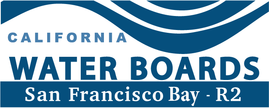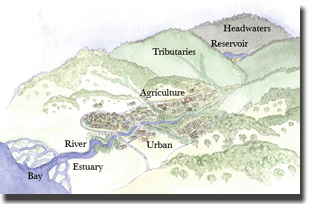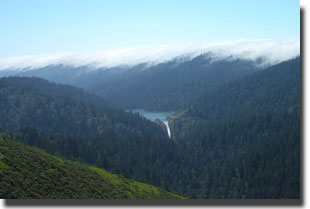Watershed Management
What is a Watershed?Bay Area Watersheds
Watershed ManagementMany water quality and ecosystem problems are best prioritized, addressed, and solved at the watershed level rather than at the individual city or site level. "Watershed management" integrates and coordinates all the activities that affect a watershed's natural resources and water quality. A watershed management approach includes:
The Water Board uses a watershed management approach whenever possible. We try to work to improve the health of an ecosystem, watershed-wide, rather than focusing on an isolated stream, species, or pollution problem. Working with Local PartnersLocal people play active roles in protecting many of the Bay Area's watersheds. Water Board staff work with watershed councils and creek groups whenever possible, involving the public and local, state, and federal environmental agencies in creek monitoring projects and in planning and executing creek restoration projects. Local knowledge and expertise is invaluable for development of local goals and performance standards.
Funding OpportunitiesBased on identified watershed priorities in our region, Water Board staff make grants and loans available to local governments, educational institutions, and non-profits working on watershed restoration, nonpoint source pollution prevention, and TMDL implementation. We evaluate and recommend support for grant proposals seeking state or federal funding that advance watershed partnerships, demonstration stream restoration projects, and low-impact, environmentally sustainable stormwater management projects. To learn more about financial assistance programs for water quality projects in California, go to the State Water Resources Control Board's financial assistance page.We also encourage integration of San Francisco Bay Area water and watershed planning through the Proposition 50 and Proposition 84 Integrated Regional Water Management Program. Watershed Management InitiativeThe statewide Watershed Management Initiative (WMI) promotes a watershed management approach for water resource protection, enhancement, and restoration while balancing economic and environmental impacts. Each of the nine Regional Boards has prepared a chapter of the WMI, which explains organizational goals and how priorities are established in the region, describes strategies for achieving local water quality goals, and catalogs each watershed's water quality issues, priorities, and unique characteristics. The WMI guides both the Water Board and watershed stakeholders as we plan water quality protection projects. Our region's WMI chapter is updated as needed.Online Watershed References and Resources:A Primer on Stream and River Protection for the Regulator and Program Manager: Technical Reference Circular WD 02-1 (pdf, 5.7MB)"Putting a Price on Riparian Corridors As Water Treatment Facilities" This peer reviewed paper provides monetary values for the water quality ecosystem services provided by streams and their floodplains and establishes the values of stream corridors as natural water treatment facilities. Regional and statewide water quality monitoring programs U.S. EPA's Watersheds Program page provides a variety of tools and documents related to watershed management around the nation. U.S. Geological Survey "Science in Your Watershed" website provides a wide variety of tools, resources, and scientific information. The California Watershed Network, a non-profit organization working to coordinate and enhance community-based watershed programs, provides news of watershed activities throughout the state, and sponsors Watershed Awareness Day and biennial watershed forums. The network also works on statewide policy issues. Key Links from this Page: |





